
Squatting is the action of occupying an abandoned or unoccupied area of land or a building, usually residential that the squatter does not own, rent or otherwise have lawful permission to use. The United Nations estimated in 2003 that there were one billion slum residents and squatters globally. Squatting occurs worldwide and tends to occur when people find empty buildings or land to occupy for housing. It has a long history, broken down by country below.

A slum is a highly populated urban residential area consisting of densely packed housing units of weak build quality and often associated with poverty. The infrastructure in slums is often deteriorated or incomplete, and they are primarily inhabited by impoverished people. Although slums are usually located in urban areas, in some countries they can be located in suburban areas where housing quality is low and living conditions are poor. While slums differ in size and other characteristics, most lack reliable sanitation services, supply of clean water, reliable electricity, law enforcement, and other basic services. Slum residences vary from shanty houses to professionally built dwellings which, because of poor-quality construction or lack of basic maintenance, have deteriorated.

Dharavi is a residential area in Mumbai, Maharashtra, India. It has often been considered to be one of the world's largest slums. Dharavi has an area of just over 2.39 square kilometres and a population of about 1,000,000. With a population density of over 418,410/km2 (1,083,677/sq mi), Dharavi is one of the most densely populated areas in the world.

A shanty town, squatter area,squatter settlement, or squatter camp is a settlement of improvised buildings known as shanties or shacks, typically made of materials such as mud and wood, or from cheap building materials such as corrugated tin sheets. A typical shanty town is squatted and in the beginning lacks adequate infrastructure, including proper sanitation, safe water supply, electricity and street drainage. Over time, shanty towns can develop their infrastructure and even change into middle class neighbourhoods. They can be small informal settlements or they can house millions of people.

Rocinha is a favela in Brazil, located in Rio de Janeiro's South Zone between the districts of São Conrado and Gávea. Rocinha is built on a steep hillside overlooking Rio de Janeiro, and is located about one kilometre from a nearby beach. Most of the favela is on a very steep hill, with many trees surrounding it. Around 200,000 people live in Rocinha, making it the most populous in Rio de Janeiro.
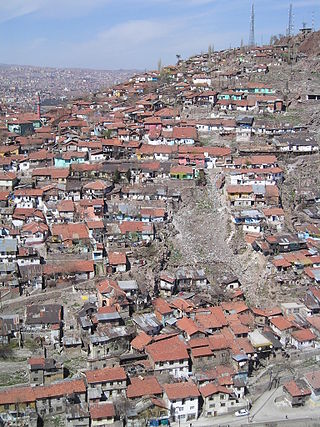
Gecekondu, meaning 'put up overnight', is a Turkish word meaning a house put up quickly without proper permissions, a squatter's house, and by extension, a shanty or shack. Gecekondu bölgesi is a neighborhood made of those gecekondular. Gecekondu neighborhoods offer an affordable alternative for shelter for many low-income households who can not afford to purchase or rent formal housing.
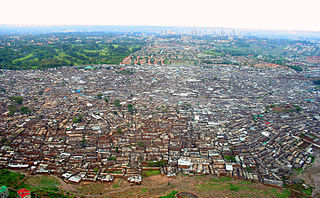
Kibera is a division and neighbourhood of Nairobi, Kenya, 6.6 kilometres (4.1 mi) from the city centre. Kibera is the largest slum in Nairobi, and not only the largest urban slum in Kenya but also in Africa. The 2009 Kenya Population and Housing Census reports Kibera's population as 170,070, contrary to previous estimates of one or two million people. Other sources suggest the total Kibera population may be 500,000 to well over 1,000,000 depending on which slums are included in defining Kibera.

Orangi is a small town in the western part of Karachi, Pakistan, with a population of 596,919 as of the 2023 census. Orangi was developed as a planned settlement in 1972 by the Karachi Development Authority (KDA) to provide affordable housing for lower-income households. The town consists of 13 union councils.

Robert Neuwirth is an American journalist, author, and investigative reporter. He wrote Shadow Cities: A Billion Squatters, A New Urban World, a book describing his experiences living in squatter communities in Nairobi, Rio de Janeiro, Istanbul and Mumbai. His articles have appeared in The New York Times, The Washington Post, Forbes, The Nation, and Newsday. His second book, Stealth of Nations: The Global Rise of the Informal Economy, was published in 2011. In this book Neuwirth joins globe-trotting Nigerians who sell Chinese cell phones and laid-off San Franciscans who use Twitter to market street food and learns that the people who work in informal economies are entrepreneurs who provide essential services and crucial employment.
Jockin Arputham was an Indian community leader and activist, known for his campaigning work of more than 40 years on issues related to slums and shanty towns. He was born in Karnataka, India and moved to Mumbai, where he quickly became politicized and established himself as a community leader. In 2014, he was nominated for the Nobel Peace Prize, alongside the organisation he helped to found, Slum Dwellers International. In 2011, he received the Padma Shri in New Delhi for his contributions to social work, presented by the President of India.
Slum upgrading is an integrated approach that aims to turn around downward trends in an area. These downward trends can be legal, physical (infrastructure), social or economic." The main objective of slum upgrading is to rehabilitate them into functional neighborhoods by addressing the social needs of the community, and improving integration into the formal urban economy.
The KwaZulu-Natal Elimination and Prevention of Re-emergence of Slums Act, 2007 was a provincial law dealing with land tenure and evictions in the province of KwaZulu-Natal in South Africa.
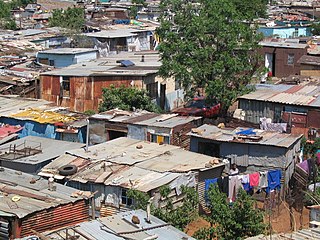
Informal housing or informal settlement can include any form of housing, shelter, or settlement which is illegal, falls outside of government control or regulation, or is not afforded protection by the state. As such, the informal housing industry is part of the informal sector.

Squatting in Ghana is the occupation of unused land or derelict buildings without the permission of the owner. Informal settlements are found in cities such as Kumasi and the capital Accra. Ashaiman, now a town of 100,000 people, was swelled by squatters. In central Accra, next to Agbogbloshie, the Old Fadama settlement houses an estimated 80,000 people and is subject to a controversial discussion about eviction. The residents have been supported by Amnesty International, the Centre on Housing Rights and Evictions and Shack Dwellers International.
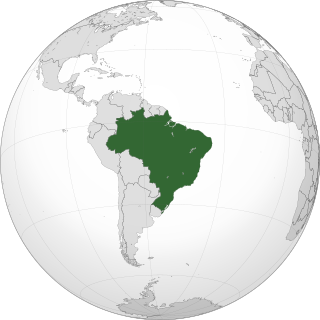
Squatting in Brazil is the occupation of unused or derelict buildings or land without the permission of the owner. After attempting to eradicate slums in the 1960s and 1970s, local governments transitioned to a policy of toleration. Cities such as Recife, Rio de Janeiro and São Paulo have large informal settlements known as favelas. A more recent phenomenon is the occupation of buildings in city centres by organised groups. In rural areas across the country, the Landless Workers' Movement (MST) arranges large land occupations.

Urban areas in the Philippines such as Metro Manila, Metro Cebu, and Metro Davao have large informal settlements. The Philippine Statistics Authority defines a squatter, or alternatively "informal dwellers", as "One who settles on the land of another without title or right or without the owner's consent whether in urban or rural areas". Squatting is criminalized by the Urban Development and Housing Act of 1992, also known as the Lina Law. There have been various attempts to regularize squatter settlements, such as the Zonal Improvement Program and the Community Mortgage Program. In 2018, the Philippine Statistics Authority estimated that out of the country's population of about 106 million, 4.5 million were homeless.

Squatting in Bangladesh occurs when squatters make informal settlements known as "bastees" on the periphery of cities such as Chittagong, Dhaka and Khulna. As of 2013, almost 35 per cent of Bangladesh's urban population lived in informal settlements.
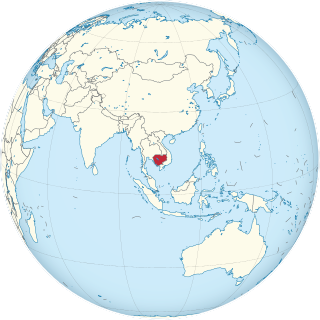
Squatting is common in the country of Cambodia. Following the Khmer Rouge and the Pol Pot regime, the new democratic government introduced land reform. In the capital Phnom Penh, where in 2003 an estimated 25 per cent of the population was squatting, there are informal settlements and occupied buildings.

During the colonial occupation of Kenya, Black Africans working on farms owned by white settlers were called "squatters" by the British. As of 1945, there were over 200,000 such squatters in the Highlands and more than half were Kikuyu. The Mau Mau rebellion began amongst these squatters in the late 1940s and after independence in the early 1960s, peasants started squatting land in rural areas without the permission of the owner.

















